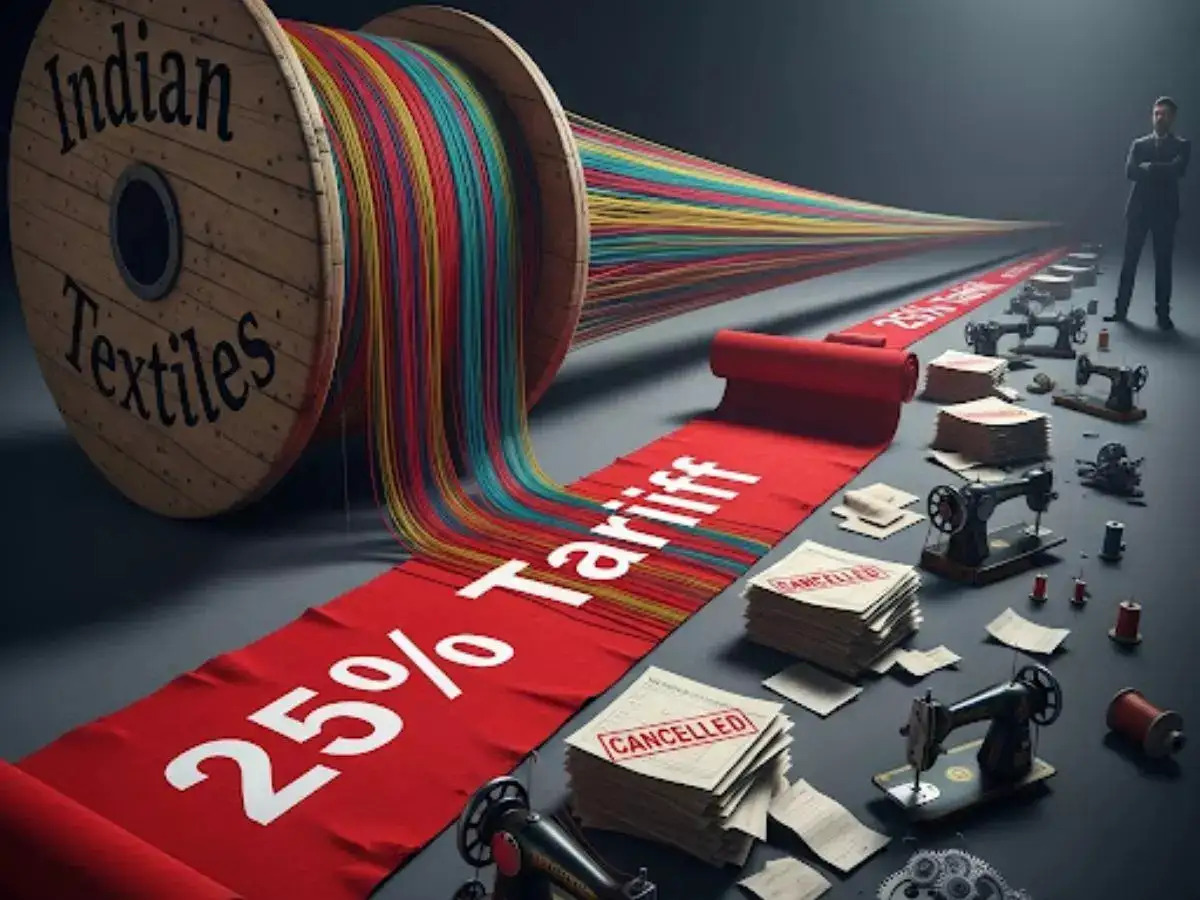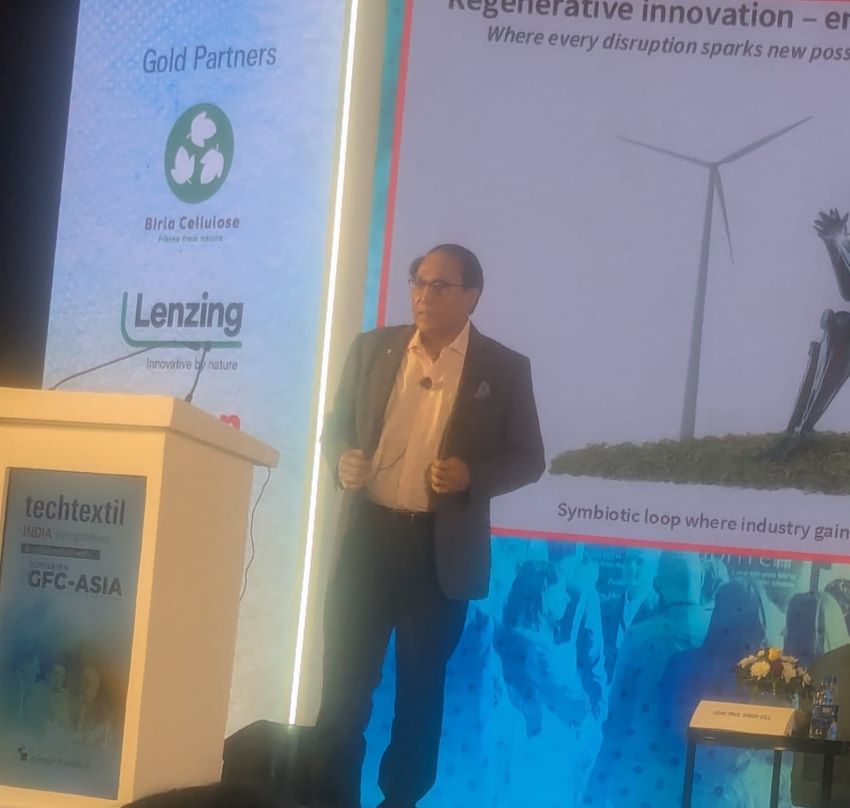FW
The textile sector in India may get access to credit at affordable rates. A national textiles policy will be announced soon. Efforts are also on to increase competitiveness of the Indian textile and apparel sector in global markets. India is looking at taking advantage of rising wage costs in China.
Textile and apparel exports managed a resilient performance in FY ’16, mainly on account of high growth registered in carpets, handicrafts, jute and even readymade garments. The amended Technology Upgradation Fund Scheme was rolled out in January 2016 with a budget provision of Rs 17,822 crores for the next seven years. It is expected to attract an investment of Rs one lakh crore and generate jobs for 30 lakh people.
Also, the Integrated Processing Development Scheme was rolled out to provide up to 50 per cent assistance for common effluent treatment plants with a zero liquid discharge system, subject to a ceiling of Rs 75 crores. A 50 per cent subsidy may be granted to power looms operating on solar energy.
The aim is to increase the earning of handloom weavers to Rs 500 a day. The total subsidy to be given is Rs 3.75 lakh to persons belonging to the general category, Rs 5.62 lakh for the OBC category and Rs 6.75 lakh to SC/ST.
China’s headline figure for dollar-denominated imports got a boost last month, if only a small one, from a record surge in the value of shipments from Hong Kong. China’s imports from Hong Kong were up 242.6 per cent year on year in May. This was the fastest rate on record based on customs data going back to 1994. Where imports from Hong Kong accounted for 0.6 per cent of all China’s imports in May 2015, last month that share had more than tripled to 1.9 per cent. It’s estimated that this is not underlying demand but has probably more to do with capital flows than anything else.
However, the relative size of imports from Hong Kong – even at their recent, unusually high levels – ultimately has only a small impact on China’s headline figure for dollar-denominated imports. China’s foreign exchange reserves dropped in May, falling to their lowest level since the end of December 2011, but in line with a broader trend of stabilisation as Beijing continued its efforts to stem capital outflows.
Hong Kong’s import growth contributed only 0.4 percentage points to the headline import figure’s change from April’s reading of 10.9 per cent to 0.4 per cent in May.
In Andhra Pradesh, the spinning industry continues to run smoothly and bring cheer to the otherwise gloomy industrial scenario in the district. As of the top 10 industries established in the district during 2015-16, nine are textile spinning units with a combined investment of Rs14, 500 crores. With this, the combined production of all spinning mills is 15.74 lakh spindles during 2015-16. However, ITC remains the biggest player.
Availability of raw cotton, skilled manpower, and incentives in the form of power subsidies, besides ease at which proposals are processed, are some of the factors responsible for the investments. Moreover, with cotton being produced in 65,000 hectares, spinning and ginning industries have always fetched good returns. Of the combined annual turnover of Rs11,540 crores of large and mega projects during 2015-2106, spinning mills accounted for Rs 6,500 crores.
The year 2012-13 had been bad for the ginning industry, which reeled under prolonged power cuts and went into recession. Soon after the new government came to power in 2014, industries were promised 24x7 power, and the industrial scenario began to look up. In 2015, the single-desk policy made covered the entire process of applying and processing online in 7 to 21 days. Under the Udyog Aadhaar memorandum, even incentives are being provided online.
From July 27 to 29, Mode in France Tokyo will celebrate 20 years and introduce a new visual identity and a logo designed by Andrea Crews. The illustration uses the French colours and its strength is what it suggests. Explains Andrea Crews Studio founder Maroussia Rebecq that the image is created like a page in a magazine. It depicts a women walking through Paris streets where she lives wearing everything that a woman in tune with her times does; she's confident and happy. It's an international image of a French woman. And since we don't see her face, she could be every woman.
Created by the Federation Française du Prêt à Porter Féminin, Mode in France Tokyo has helped put fashion brands in touch with Japanese professionals who may not travel to 20 years later, at every session (January/July) the show brings together over 50 French fashion brands and 1,500 buyers, showrooms, and Japanese retailers. The ‘select shops,’ emblems of the new Japanese retail scene, are on the streets of fashionable neighbourhoods or in ‘fashion building’ shopping complexes. They are constantly searching for new products, cross-market products, and innovative lifestyle concepts.
The Federation has tracked these changes and is repositioning Mode in France Tokyo to better respond to this new context. The event will be held at the Westin Hotel in the Ebisu district and will present an original product offer mixing womenswear, accessories, and lifestyle goods in a 1,600 m2 space.
A group of central and state government officials set up to frame the law for proposed goods and services tax (GST) has submitted its final draft that could be taken up at a meeting of the empowered committee of state finance ministers soon. The draft law may be made public after it's deliberated by the empowered panel headed by West Bengal finance minister Amit Mitra.
In the upcoming monsoon session of Parliament, the government is expected to make a renewed push for the passage of the constitutional amendment bill to roll out GST armed with more members in the Rajya Sabha and a broad-based national support for this reform.
The constitutional amendment will merely allow for this single tax, which is not possible under the current structure of taxation. At present states are not empowered constitutionally to tax services and the central government cannot tax goods sold in retail. Empowering both the states and centre to levy this tax, the constitutional amendment will seek to change this.
Meanwhile, the government has been seeking to persuade Congress to drop its resistance to GST and help get parliamentary approvals. GST seeks to replace central and state taxes such as excise duty, service tax, value-added tax, entry tax and octroi with a single levy and create a unified national market.
The Indian geo synthetics market will double in the next four years, even though domestic manufacturers are struggling to build awareness about their products. The country’s current focus on upgrading infrastructure and increased importance of environmental issues will be the biggest growth drivers. The main growth will be within infrastructure projects – roads, railways, dams and shore protection.
India has the world’s second largest road network, and 95 per cent of the roads are flexible pavements. These surfaces often use geo synthetics to help stabilise their foundation. The utilisation of cost-effective material such as geo synthetics is important to achieve the desired life of the pavement as well as to facilitate their faster construction.
Almost every type of geo synthetic is manufactured in India or is readily available through imports. Geo grids and high-strength geo textiles for construction on soft soil are popular products in India. Since there are heavy rains in some parts of India, the use of drainage geo-composite would be very beneficial.
The secluded and rainy Northeastern region is an ideal place for extensive use of geo synthetics due to frequent landslides, seepage problems, poor quality of construction material and high seismic activity.
However the popularity of geo synthetics in India is hindered by a lack of specified standard of products suitable for Indian soil and weather conditions.
US apparel imports posted a 1.77 per cent gain in April over March, but were down 4.94 per cent compared with the same month a year ago. Consumer spending on non-durables such as clothing rose 1.4 per cent in April, the biggest increase in more than six years. But April’s positive result may not be the start of a rebound. Weak demand and muted growth remain the forecast for the sector.
Leading apparel retailers like Macy’s and Nordstrom’s have reported disappointing first quarter results, following a slump in sales that began in second half 2015. Consumers are bypassing these mall anchors to shop at fast-fashion chains and online. Amazon overtook Wal-Mart as America’s largest retailer last year. It is poised to overtake Macy’s as the largest clothing retailer next year.
The shift in apparel production from China to lower-cost markets continues apace. China’s share of US apparel imports has eroded from 38 per cent in 2011 to 31 per cent this year through April. The biggest winner, Vietnam, now accounts for 13 per cent. For US apparel imports from January to April 2016, the biggest share was held by China, followed by Vietnam, Bangladesh, Indonesia, India and Mexico.
"Cotton sustainability ranking released recently by Pesticide Action Network (PAN) UK, Solidaridad and WWF had just eight out of 37 companies make it out of the red zone while home furnishing giant IKEA which tops the list, is in the green zone. Cotton is one of the most commonly used and versatile textiles, everyday product from T-shirts to bank notes. But conventional production can have serious environmental and social impacts, from excessive water and pesticide use to poor labour conditions."

Cotton sustainability ranking released recently by Pesticide Action Network (PAN) UK, Solidaridad and WWF had just eight out of 37 companies make it out of the red zone while home furnishing giant IKEA which tops the list, is in the green zone. Cotton is one of the most commonly used and versatile textiles, everyday product from T-shirts to bank notes. But conventional production can have serious environmental and social impacts, from excessive water and pesticide use to poor labour conditions. The companies using the most cotton globally, from apparel brands and supermarkets to furniture manufacturers and household stores are failing to deliver on cotton sustainability should be of major concern.

The independent cotton sustainability ranking released recently by Pesticide Action Network (PAN) UK, Solidaridad and WWF, saw some others too in the green list including Adidas, C&A, H&M, Kering, M&S, Nike and VF Corporation (owner of Timberland, The North Face, Lee and Wrangler among others). The remaining 29 companies appear to do little or nothing to mitigate the impact of this essential raw material - Hermes International, Nordstrom, Ralph Lauren and Richemont are examples of those not yet in the starting blocks.
Problems related to cotton farming
To anyone who is motivated by sustainability and the agenda set out in the UN's new Sustainable Development Goals, this is worrying news. Cotton production is associated with depletion and pollution of water sources, long-term damage to soils and loss of biodiversity. Cases of pesticide poisoning are prolific, and the health dangers for cotton farmers and their families and communities are significant. Despite these issues, cotton farming has received very little attention in comparison to the well-documented problems in garment manufacturing.
For many developing economies, cotton farming is a mainstay that provides livelihood to millions of farmers worldwide - an estimated 40 million small cotton farmers produce around 75 per cent of the world's cotton - it is imperative to improve the way cotton is grown. Various sustainable cotton initiatives from Organic and Fairtrade to Better Cotton Initiative and Cotton Made in Africa have been trying to do just this by instigating more sustainable practices that cut farmers' costs and improve productivity, for a decade or more. Today, around 13 per cent of global supply is more sustainably grown. However, less than a fifth of this amount is actually sourced, bought and used by manufacturers and retailers as sustainable, with the rest being sold as conventional due to lack of demand from top brands and companies.
Lack of supply, so often cited by companies as the barrier, is no longer the problem. Excuses for low uptake of available supply given by companies include low consumer demand, complexity of supply chains and additional costs. In reality, sourcing more sustainable cotton has never been easier and these excuses crumble under close examination. There is no reason for companies not to improve cotton sustainability and offer more responsible products to customers. Moreover, this would give recognition and reward to farmers for the efforts they have made to improve.
Some are showing the way
Companies like IKEA, C&A and H&M are showing how cotton sustainability is good for business while others are failing to deliver. Manufacturers and retailers are simply not buying enough sustainable cotton, even though it is available and the price differential negligible. This inertia signals potential disaster for efforts to transform the cotton sector for the better. Consumers expect top brands to produce their goods in ways that at the very least don't harm people, communities or the wider environment in the name of profit. All major companies need to get on board and any caught napping will risk their brand reputation.
Through the ranking, campaigning organizations - PAN UK, Solidaridad and WWF are calling on all companies using large volumes of cotton to set, report and deliver on targets to use 100 per cent cotton from more sustainable sources by 2020 at the latest.
Sutlej Textiles and Industries (STIL) have achieved a turnover of Rs 2,302 crores, an increase of 20 per cent year on year for the year ended March 31, 2016. Net profit for the year was Rs. 143 crores, an increase of 24 per cent over the previous year.
According to C S Nopany, Chairman, Sutlej Textiles and Industries, the financial year 2016 has been a challenging one due to the global economic slowdown. Despite these challenging times, Sutlej, with its strategy of focusing on operational efficiency, organic and inorganic growth through capacity expansion both in spinning and home textiles, has reported increased revenues and profits during the year.
Meanwhile, discussions on acquisition of Birla Textile Mills (BTM) successfully concluded on September 30 last on receiving statutory approvals. BTM, located at Baddi in Himachal Pradesh, has a capacity of 83,376 spindles and manufactures cotton, synthetic & blended yarn in grey & dyed form. STIL’s total spinning capacity has gone up to 377,688 spindles as on March 31, 2016. The company had spent around Rs. 20 crore on de-bottlenecking and value-additions at the BTM unit during the year.
Nopany informed that the work on the project for adding 35,280 spindles at the Bhawani Mandi facility in Rajasthan has commenced. Civil work is progressing, and orders for key plant and machinery have been placed.
The company, with a strong global clientele, exports to nearly 60 countries. It has presence across major developed and emerging economies like Australia, Argentina, Bangladesh, Bahrain, Belgium, Brazil, Canada and China.
Exporters in Tirupur want issues that are hampering the growth of exports to be addressed. They want a list of fabric items to be included for import under the Export Performance Certificate, without payment of duty, so as to get the real benefit of the announcement in the budget and enhance their competitiveness in the global market.
They are also interested in a Free Trade Agreement with the European Union. Last year, the European Union received 36.97 per cent of the value of garments exported from India. Exporters feel that if the FTA with the EU takes place in the month of September this year, exports to EU can grow and witness a growth rate of 30 per cent in successive years and double in the next three years.
Exporters also want the Comprehensive Economic Partnership Agreement (CEPA) with Canada to be formalized and the Comprehensive Economic Cooperation Agreement (CECA) with Australia to be expedited.
So they say that once the FTA with the EU, CECA with Australia and CEPA with Canada are signed, there will be 30 per cent increase in exports to these countries from the existing level and, at the same time, exports to the rest of countries will grow by 10 per cent. All in all they estimate India’s total garment exports can grow to 33 billion dollars once these agreements are signed.












